This elegant little 35mm fixed-lens compact belonged to my partner’s late father. It was the last model in a relatively little-known and idiosyncratic line of cameras made in Germany between 1947 and 1957 by Walter Voss. Fortunately my partner’s dad looked after the camera well and it’s still in almost perfect working condition and even has the chic mid-20th-century brown leather case, which perhaps now adds a little hipster (non-vegan) cachet. The L-1 was apparently ‘not very successful’ in its day and is supposedly rare now. Paradoxically its rareness does not make it particularly expensive on the second-hand market. It was released in 1957, the same year that the Diax factory closed.
Two useful sources of information (that I can find easily) on the Diax L-1 and its predecessors are provided here and here.
The Diax L-1 has a fixed, three-element 45mm F2.8 ‘Rodenstock-Diax-Trinar’ lens, which produces acceptably sharp images when closed down at least a couple of stops but is noticeably soft at the frame edges wider than F5.6. I can find no information about lens element coatings for this lens, and I have not tried colour film with it yet. Earlier Diax models had an interchangeable lens system and took lenses made by Schneider and Isco. Diax was a cheaper alternative to Leica and Contax at the time. However the workmanship on the L-1 seems generally of a high standard to me.
The aperture range tops out at F16 and the Compur-Rapid leaf shutter provides speeds from one second to a five hundredth of a second, as well as B. I haven’t tested the flash sync but I have no reason to doubt that a flash could sync with any available shutter speed. The x-sync connector is on the front of the body just above the lens.
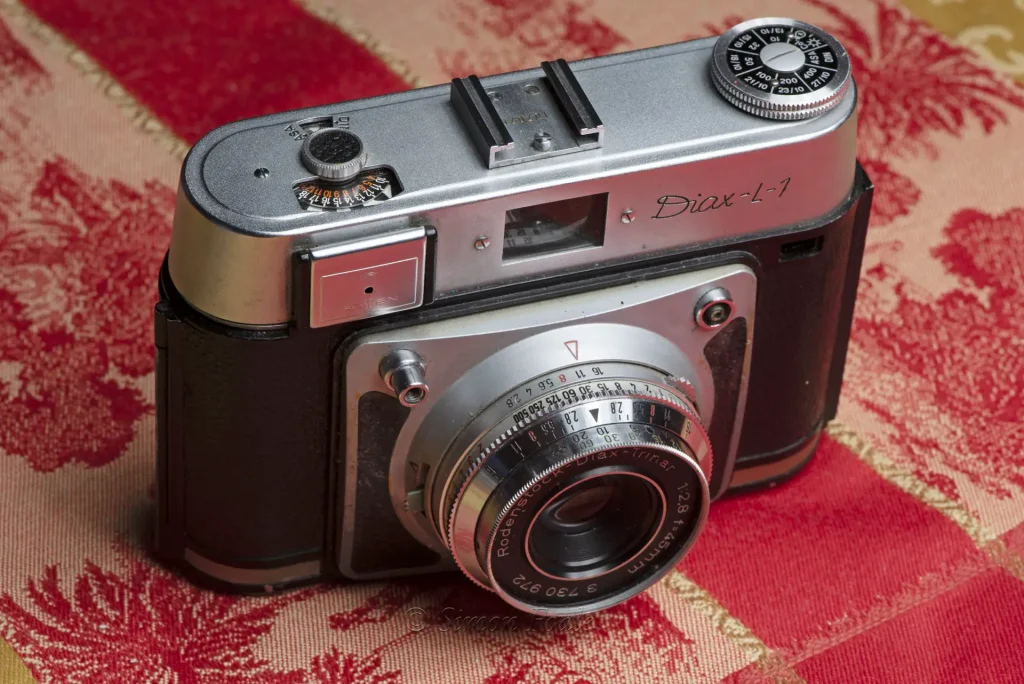
There’s an accurate and well-designed on-board Gossen selenium light meter (no battery needed) and a nifty system on the aperture and shutter speed rings for transposing the integer that the meter’s needle lines up with to get your F-stop and shutter speed. There are two rows of numbers in the light meter window on the top of the camera – one (the white numbers) for when the metal lid (with small central hole) is down (for bright conditions) and the other (orange numbers) for when the lid is open. It may be that the two tiny rectangles of orange paint on the lower edge of the light meter’s metal lid (one of which is missing on this camera), which only become visible when it is open, are meant to indicate this.
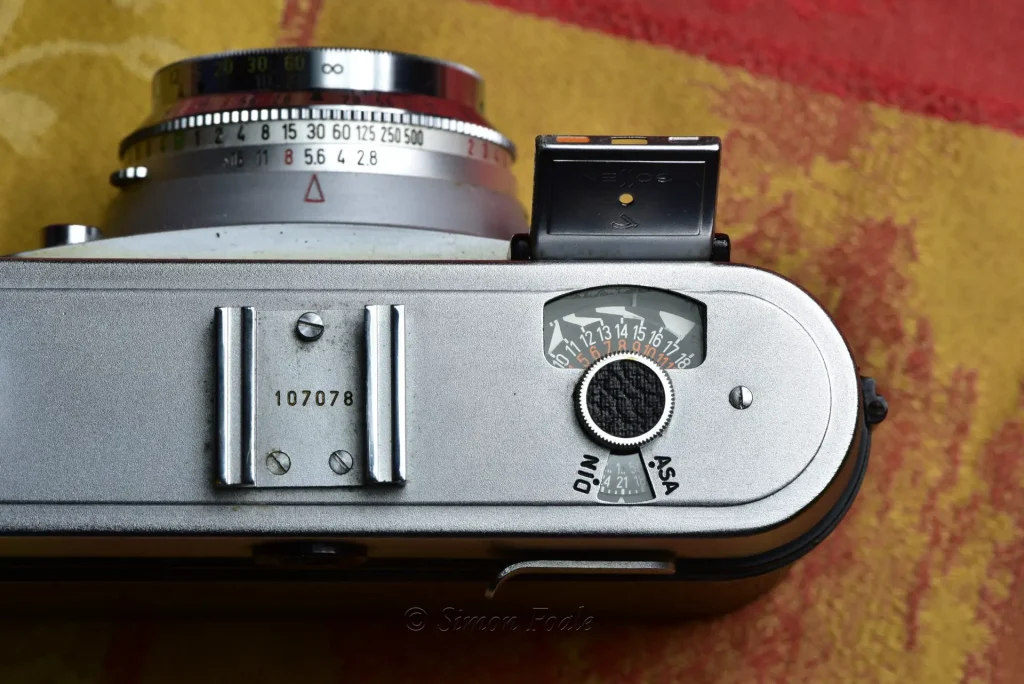
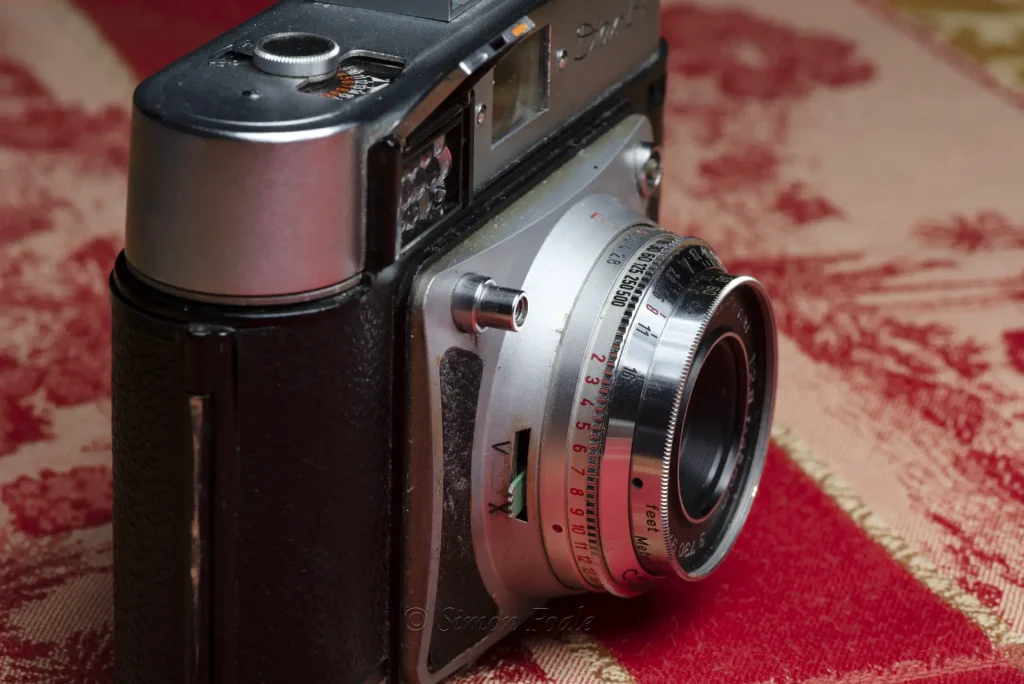
The aperture and shutter speed dials are normally locked together, so to change them relative to each other you press the little cog-like projection on the aperture ring (visible in the two images preceding the above, side view) in towards the camera body and then turn the aperture ring. That’s perhaps the least ‘elegant’ aspect of the camera’s design, but it works nevertheless.
There’s no range-finder system for focussing (some of the earlier Diax models did have range-finders) so you have to guess the distance of your subject and adjust focus accordingly. Distance scale is marked in meters and feet. Minimum focus is three feet. There is also a green lever on the right side of the lens mount which can be switched between V and X setting settings. This appears to function as a (quite stiff) self-timer, so I’m still mystified as to the meaning of the letters. I know that on some old cameras (like the Zeiss Ikon Contina) there is a lever that lets you choose between X (electronic flash) and M (flashbulb) settings, but I can’t see how these Diax settings would relate to those.
Unlike many of the earlier Diax models, the L-1 advances the film (and cocks the shutter) with a lever. Once a roll is finished it is rewound with the knob on the top left of the camera, after pressing a small chrome button on the bottom of the camera.
A fun quirk is the frame counter, which is on the front of the camera body beneath the rewind knob, and has the numbers written upside down, so you simply flip the camera to read it, in the same way you can (if you want) mount a Nikonos 35mm lens upside down for reading aperture and depth of field with the camera flipped. The images I’m presenting below are a few years old (partly given away by the presence of a broadsheet newspaper in one). They are all shot on Kodak T-max 100 and are of various scenes in and around Canberra and Sydney. I’ve added a couple of crops to give a rough idea of the resolving power of the lens.
I found the Diax L-1 quite easy to understand (apart from the letters on the self-timer) and operate and the pictures it has produced are on a par with many modern 35mm cameras. I doubt if I would hand over too much of my hard-earned for one of these if it hadn’t been in the (extended) family already, but it was fun trying it out and discovering that it worked pretty much as intended!
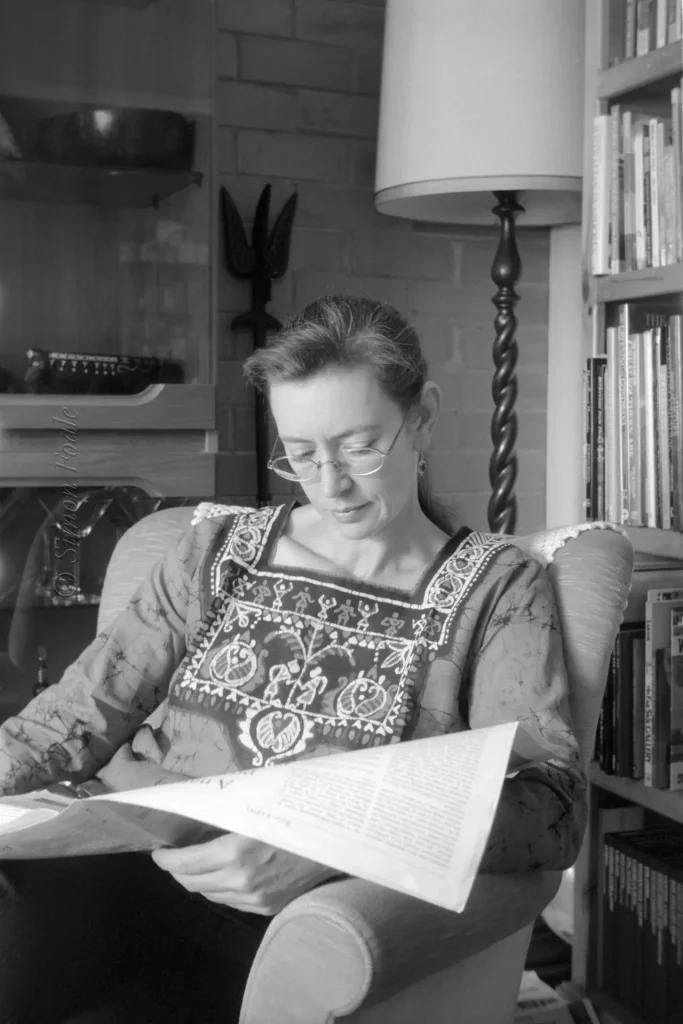
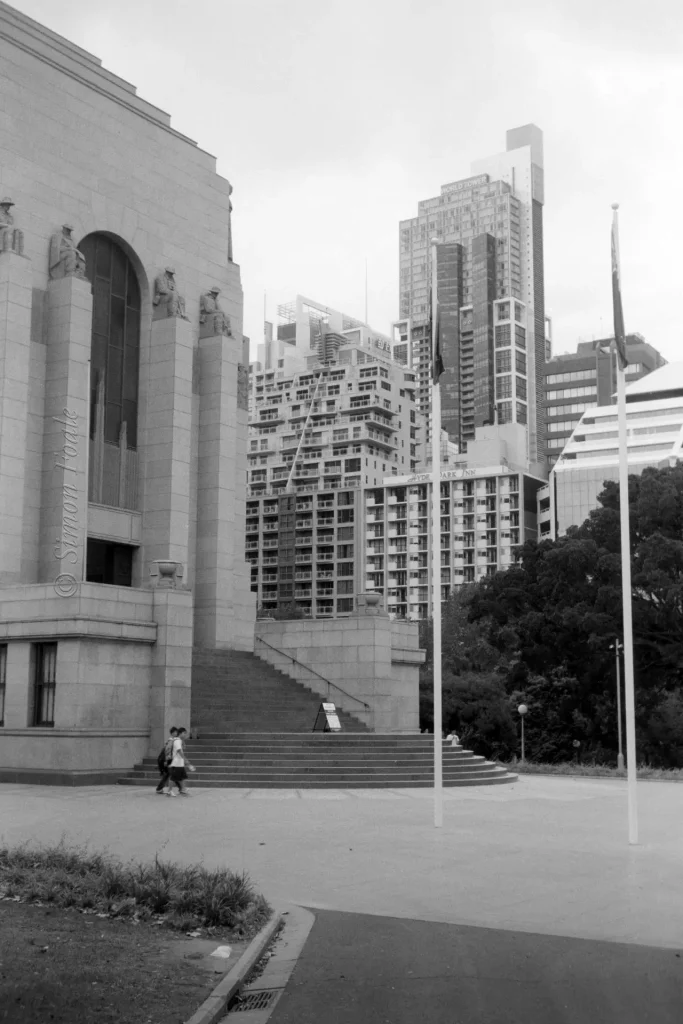
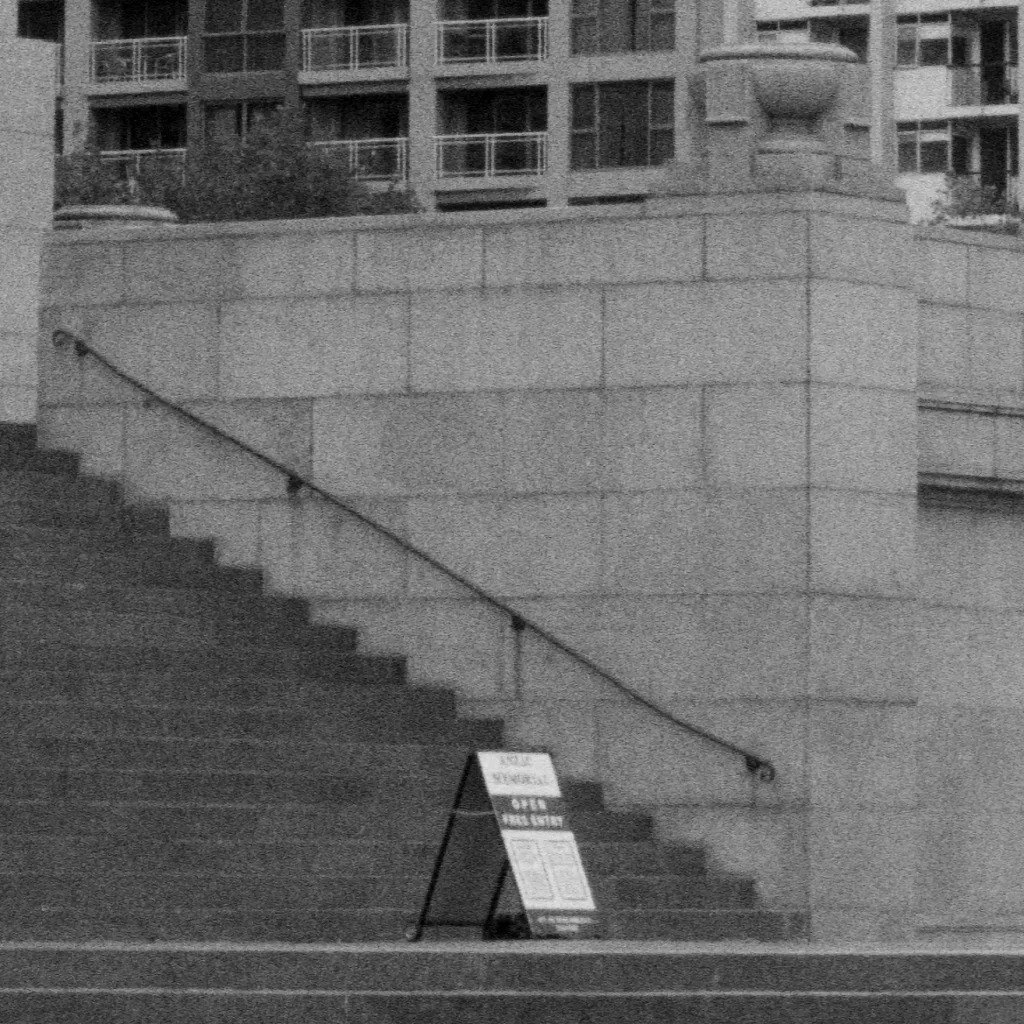
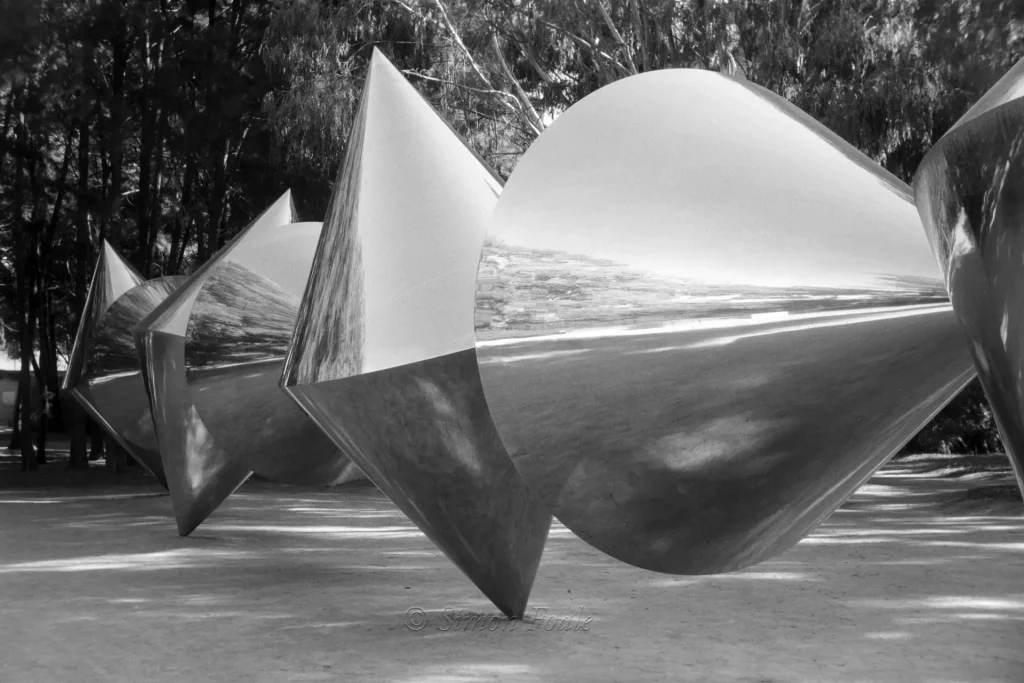
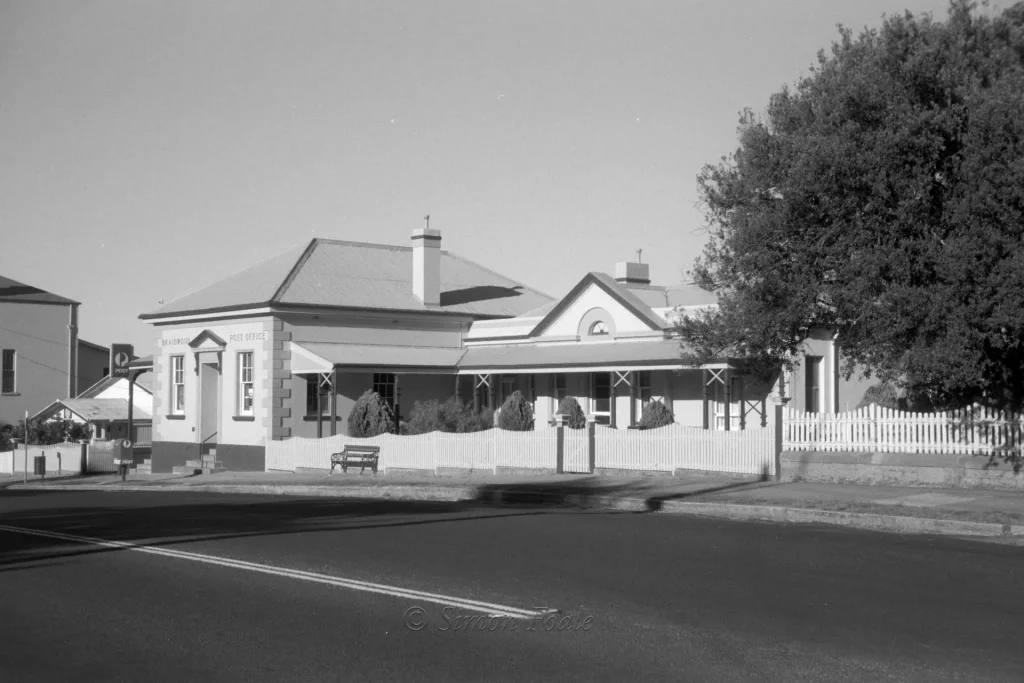
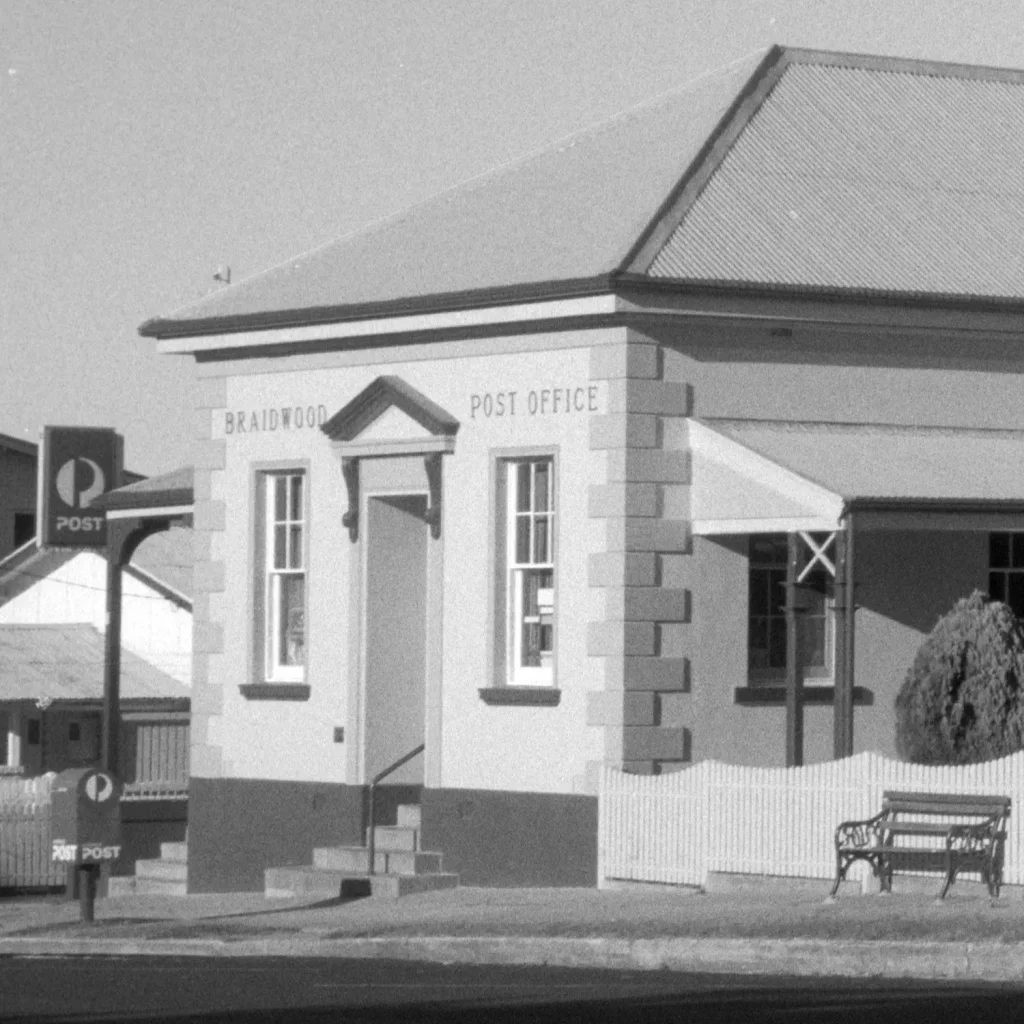
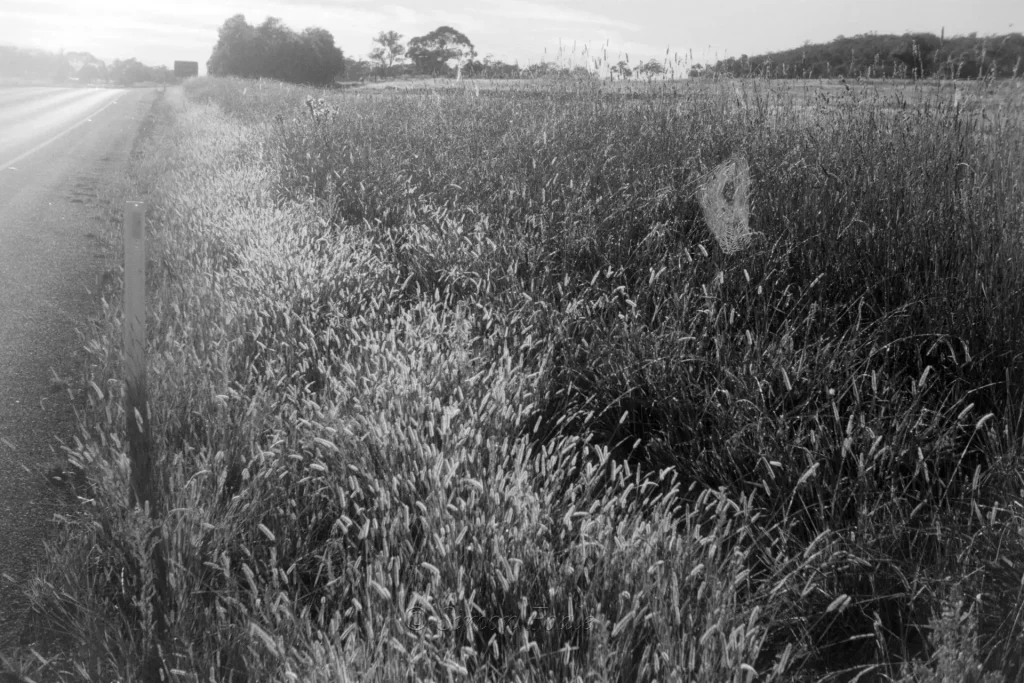
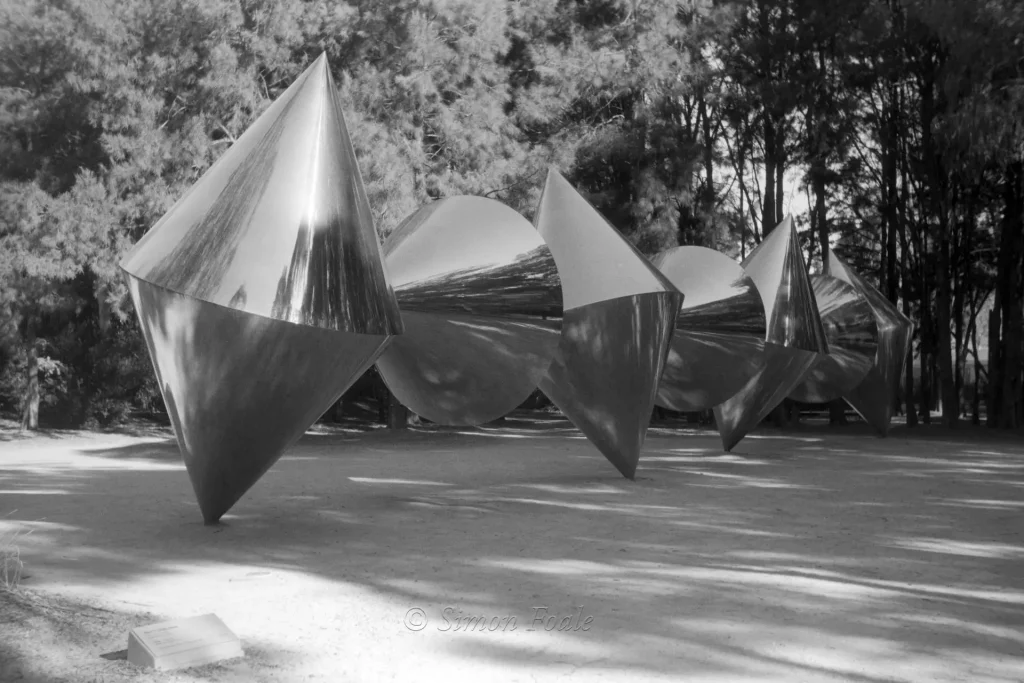
Thanks for reading and you can find more of my images on Flickr.
Share this post:
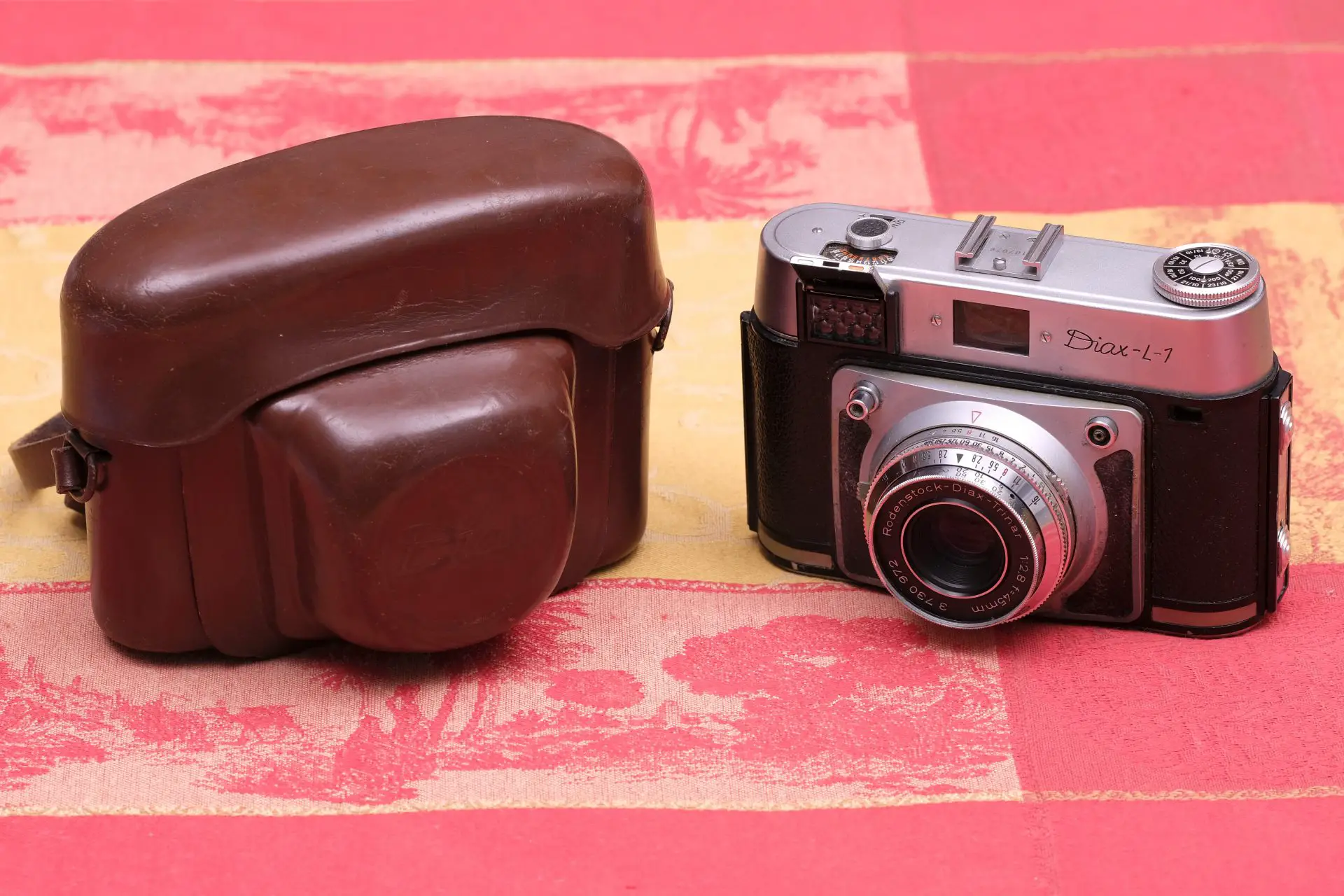








Comments
Shubroto Bhattacharjee on Diax L-1 Scale Focus Camera Review – by Simon Foale
Comment posted: 09/02/2021
V sets the self-timer.
I believe that the V stands for ‘Vorlaufwerk’ (Delayed action shutter release).
Enjoy your Diax!
Comment posted: 09/02/2021